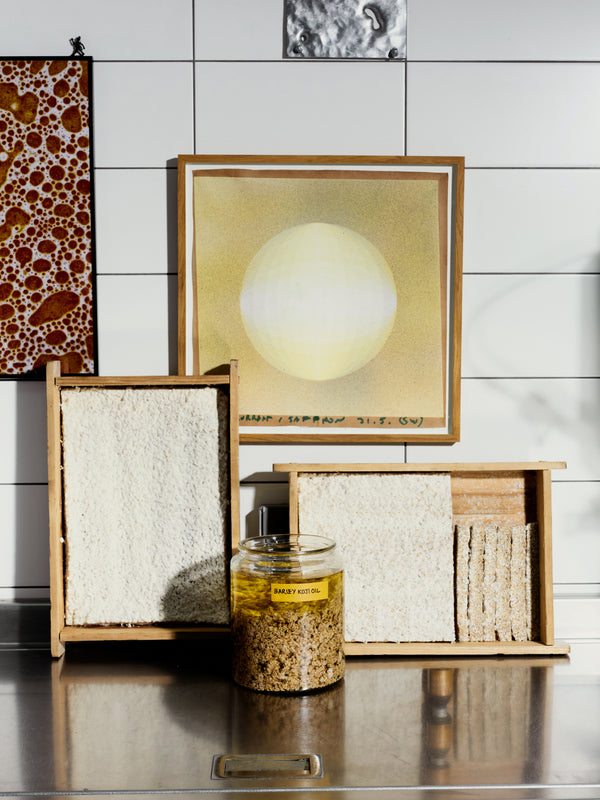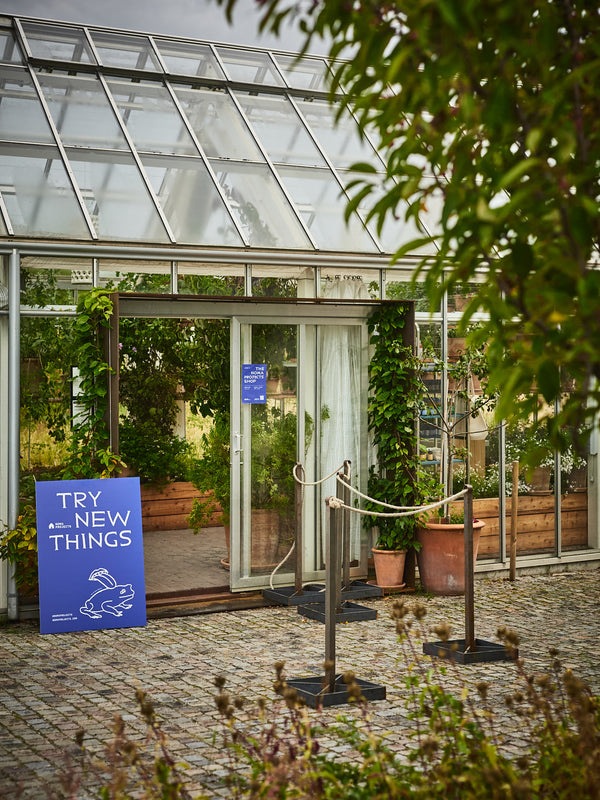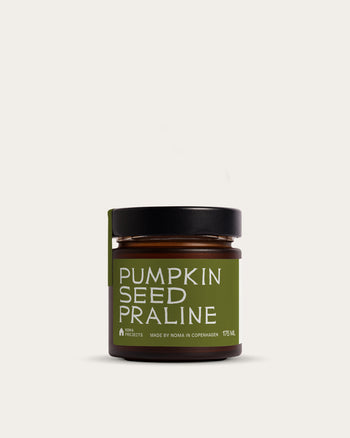Fermentation Kit 1
In this first Taste Buds Fermentation Kit we will explore Lactic-Acid Fermentation. Below you will find an introduction and recipe alongside an introductory video and a video tutorial.
LACTIC-ACID FERMENTATION
Lactic-acid fermentation is one of the oldest and most satisfying methods of food preservation: beneficial bacteria transform sugars into lactic acid, enhancing flavor, texture, and shelf-life, while also promoting gut health. This natural process is the “secret” behind such widely beloved foods as pickles, sauerkraut, kimchi, sourdough bread, yogurt, and sour beer; it plays an essential role in the production of fine cheeses, wines, soy sauces, and misos, as well.
Once you have a grasp of the underlying principles behind lacto-fermentation, there are myriad places you can apply it.
RICE KOJI
It probably won’t surprise you to hear that koji is one of the key elements included in this fermentation kit. It’s an ingredient we have learned to harness at noma over the years; when the fungi Aspergillus oryzae grows on a substrate, it generates a series of enzymes—proteases and amylases—that have the potential to transform ingredients in almost miraculous ways. While we develop koji on several different grains, legumes, and even vegetables at noma, we’ve chosen to include rice koji in your kit so you can build a foundation, just like we did.
ENZYMES
Enzymes are temperature and pH-sensitive molecules that catalyze chemical reactions: under the right conditions, they can break down different compounds into smaller molecules and make chemical reactions go faster.
When it comes to the proteases, these enzymes break down proteins into small pieces called peptides, which encourage the flourishing of umami in ferments like miso and soy sauce.
Meanwhile, the amylases break down starches into sugars, bringing out the natural sweetness “hidden” within grains. Amazake, the Japanese sweet rice porridge, is one example. Made by mixing rice koji and water and keeping the mixture at around 55-65° C to promote enzyme activity, it is traditionally consumed as a drink. It can also serve to kick start other fermentations such as sake, in which yeasts converts the sugars into alcohol.


LACTO-AMAZAKE
Lacto-amazake is a naturally sweet, slightly tangy, and quite versatile ferment that can be used for various purposes, from the production of beverages and sauces to desserts.
Lacto-amazake is made through a two-step fermentation process:
STEP 1: SACCHARIFICATION
The koji enzymes turn the starches of our rice porridge into sugars, resulting in sweet
amazake.
STEP 2: LACTO-FERMENTATION
The lactic-acid bacteria uses the fermentable sugars to generate lactic acid and CO2.
In order for the lactic-acid bacteria to effectively carry out this process, it’s beneficial to promote a warm (30 °C) and anaerobic environment.
As part of our group-fermentation journey, we’ll show you how to do this at home, sharing our knowledge and guidance along the way.
The process should be quite effortless. Really, it comes down to two things, both having to do with temperature.
1. To make the best use of the wonderful enzymes in the koji we have prepared for you, it’s essential to keep the temperature of the mix between 55-65 °C. That is the sweet spot. Once you have landed comfortably within that range, you’ll have amazake to enjoy in just a matter of hours.
2. To kick-start the lacto-fermentation, we’re going to add a sprinkle of the culture
included in your kit. These bacteria tend to thrive between 25 and 35 °C. For this
reason, we need to keep them in a warm environment.
LACTO-AMAZAKE RECIPE
(MAKES 1.2 LITERS)
TOOLS
This pouch contains everything you need to make lacto-amazake, except for a few tools that you likely have at home.
— Thermos, jar, or similar vessel
— Blender, Bamix, or Thermomix
— Thermometer
INGREDIENTS
— 900g Water
— 300g Dried koji
— Sprinkle of Bactoferm® TD-66
INSTRUCTIONS
1. Disinfect all the equipment by rubbing with alcohol or vigorously washing using soap and hot water to preheat the container (jar or thermos).
2. Warm up water in a pot or a kettle without letting it boil. In a vessel, combine the dried koji and the hot water (that must be between 60 and 65 °C to avoid killing the koji). Let it hydrate for a few minutes and blend until the mixture is milky, and the rice grains have all been broken up.
3. Transfer the mixture to the thermos or a jar, making sure to leave 1/3 of headspace. Seal and hold between 50 and 60 °C for 3 to 5 hours, stirring at least two or three times in between.
4. Once 3-5 hours have lapsed, taste the amazake; it should taste noticeably sweet. If it isn’t sweet yet, keep it at 50–60 °C for a few more hours. When the amazake is sweet, pour it into a container and allow it to cool at room temperature or in the refrigerator. Cool the amazake down to ~30 °C and add a sprinkle of Bactoferm® TD-66; stir or shake well, until it is no longer visible.
5. In a clean, sanitized vessel (preferably with an airlock), ferment the amazake for 2 to 4 days at room temperature (the exact time needed is temperature-dependent). After 2 days, taste and check the pH: we aim for a pH under 4. Depending on your liking, you can decide when to stop the fermentation, by removing the airlock and putting the vessel in the fridge. Once completely cooled, close the vessel with a lid and enjoy your lacto-amazake within a week or freeze it.














